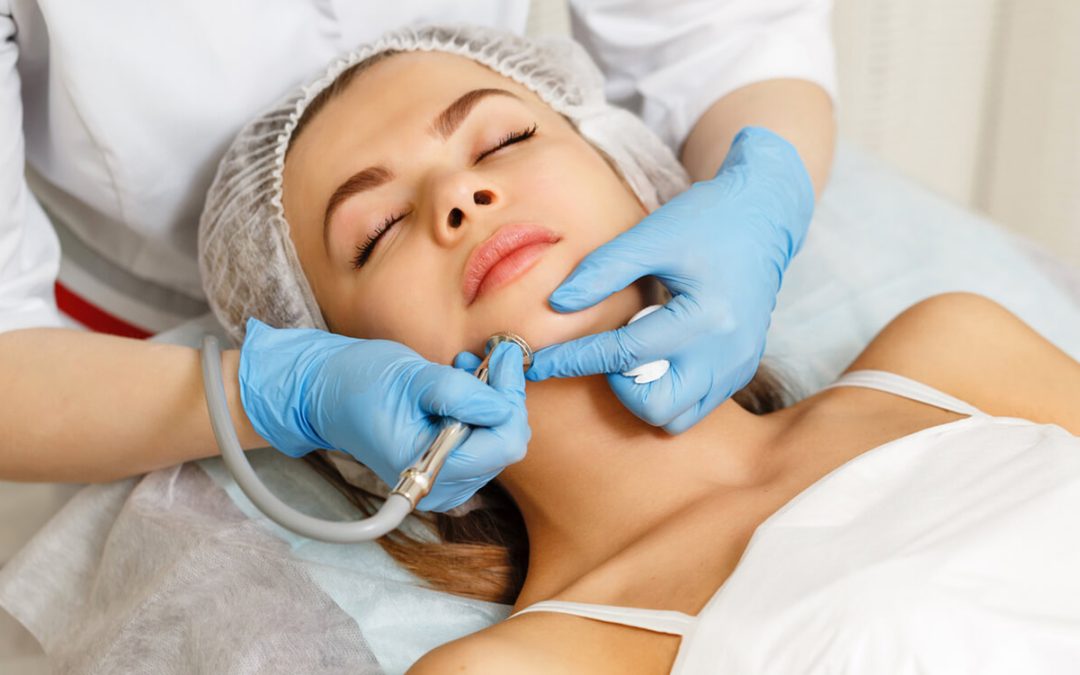Microdermabrasion remains one of the most commonly performed non-surgical cosmetic procedures. This minimally invasive treatment helps manage a wide range of skin concerns, including sun damage, wrinkles, uneven tone, and certain acne scars.
Approved in 1996, microdermabrasion has become a go-to treatment thanks to its minimal downtime and suitability for most skin types and tones. Mild side effects such as tenderness, swelling or redness typically resolve within hours.
What Is Microdermabrasion and How Does It Work?
The name says it all—”micro” (small scale), “derm” (skin), and “abrasion” (removal). This treatment gently removes the outermost layer of skin to reveal a fresher layer underneath.
Understanding the Exfoliation Process
A skincare professional uses a specialised handheld device to target only the uppermost layer of skin, known as the stratum corneum. Unlike harsh chemical peels, microdermabrasion is non-surgical and minimally invasive with little to no downtime.
The treatment usually lasts 30–60 minutes. Several passes are made over the treatment area to slough away dull and damaged skin cells. It typically feels like a mild scratching or vibrating sensation, but remains comfortable throughout.
Crystal vs. Diamond-Tip Methods
There are two common techniques used in modern microdermabrasion:
- Crystal microdermabrasion: A stream of tiny crystals is directed at the skin and then vacuumed away along with the exfoliated skin.
- Diamond-tip microdermabrasion: A wand with a diamond-encrusted tip gently buffs away dead skin. Different levels of coarseness allow for precise treatment, particularly around sensitive areas.
How It Stimulates Collagen and Skin Renewal
Microdermabrasion triggers the skin’s natural healing response, which includes increased production of new cells and collagen. Collagen is essential for maintaining skin firmness and elasticity. By stimulating fibroblast activity in deeper layers of the skin, the treatment helps restore structure and support over time.
Key Benefits of Microdermabrasion
Microdermabrasion is a gentle treatment that delivers a range of skin benefits without significant downtime.
Improves Skin Tone and Texture
The treatment removes dead cells and boosts circulation, improving overall skin texture and elasticity. Many notice a softer, more radiant complexion shortly after treatment.
Reduces Fine Lines and Wrinkles
By encouraging collagen production, microdermabrasion can help diminish the appearance of fine lines, particularly around the eyes, mouth, cheeks and forehead.
Fades Acne Scars and Pigmentation
Shallow acne scars, age spots and certain types of pigmentation may become less noticeable after several sessions. This treatment can assist with redistributing pigment more evenly in the skin.
Unclogs Pores and Helps Reduce Breakouts
Microdermabrasion assists with clearing blocked pores, removing excess oil and dead skin that often contributes to breakouts. The skin’s hydration and overall texture and tone can also improve.
Enhances Absorption of Skincare Products
By removing the outer barrier of the skin, microdermabrasion can improve product penetration, making active skincare ingredients more effective. As well as helping skincare to go further on application.
What to Expect Before, During, and After Treatment
Understanding the full process can help manage expectations and ensure optimal results.
Pre-Treatment Preparation
To minimise sensitivity, it’s important to avoid sun exposure for at least one week prior. Discontinue the use of exfoliants and active ingredients like retinoids 3–5 days before treatment. Aspirin and similar medications should also be paused where possible
Step-by-Step Treatment Process
After a brief consultation, the skin is cleansed before the handheld device is used to exfoliate the targeted area. The session usually lasts 15–30 minutes. Post-treatment care includes moisturiser and sunscreen to protect the fresh skin.
Post-Treatment Care and Recovery
Temporary redness or a flushed appearance is normal and typically resolves within 24 hours. To support recovery:
- Avoid heavy exercise, saunas and hot showers
- Refrain from using exfoliants or products containing active ingredients for 48 hours
- Stay out of chlorinated pools and direct sunlight
- Apply broad-spectrum SPF 30+ daily
Results and Maintenance
Smoother, softer skin can often be felt immediately after the first session. Results typically align with the skin’s natural renewal cycle, lasting 30–40 days. A series of treatments spaced 4–6 weeks apart is commonly recommended, followed by occasional maintenance sessions.
Risks, Side Effects and When to Avoid Treatment
Common Side Effects
Microdermabrasion is generally well-tolerated, though some may experience:
- Mild redness or tenderness
- Flaking or dry skin
- Increased sensitivity to sunlight
- Temporary bruising, especially in delicate areas
These symptoms usually subside within 24–48 hours.
When to Avoid Treatment
Microdermabrasion is not suitable for those with:
- Active infections or open wounds
- Recent sunburn or other invasive skin treatments such as laser treatments and chemical peels.
- Use of oral isotretinoin (within the past 6–12 months)
- Blood-thinning medications
- Hormonal skin sensitivity during pregnancy
Those with specific skin conditions such as eczema, rosacea, or severe acne should consult a professional, as treatment may worsen symptoms.
How Esteem Clinic Can Help
Microdermabrasion is a well-established treatment for enhancing skin texture, clarity and tone. At Esteem Clinic, our experienced dermal therapists take a tailored approach, considering each individual’s skin needs and sensitivities.
To explore whether microdermabrasion suits particular skin concerns, reach out to the Esteem Clinic team for a consultation. A personalised treatment plan can help support long-term skin health and confidence.
